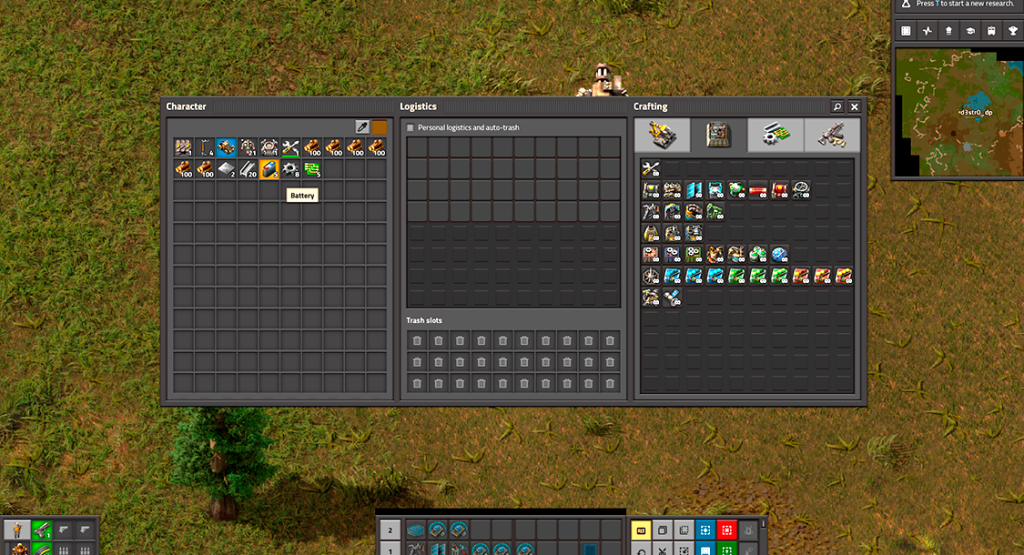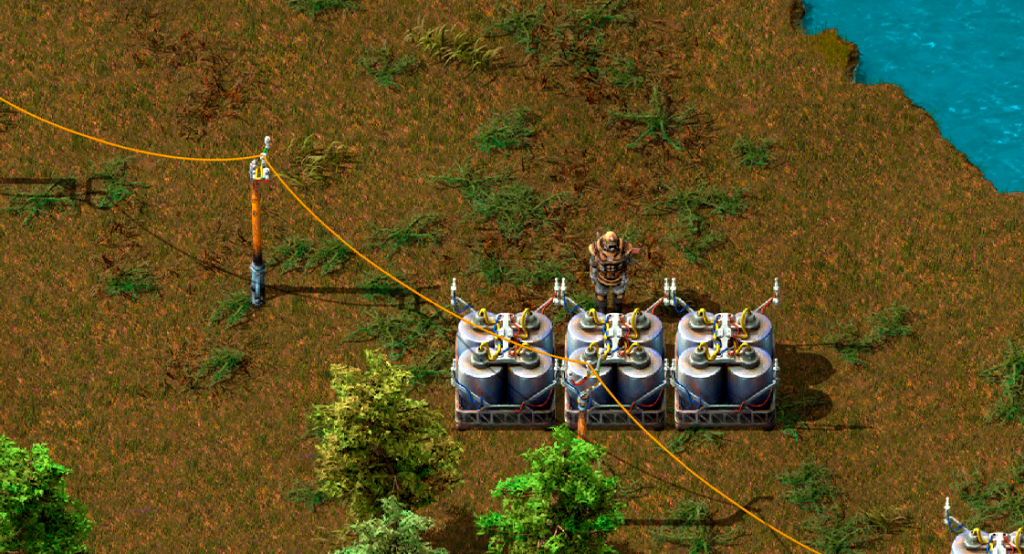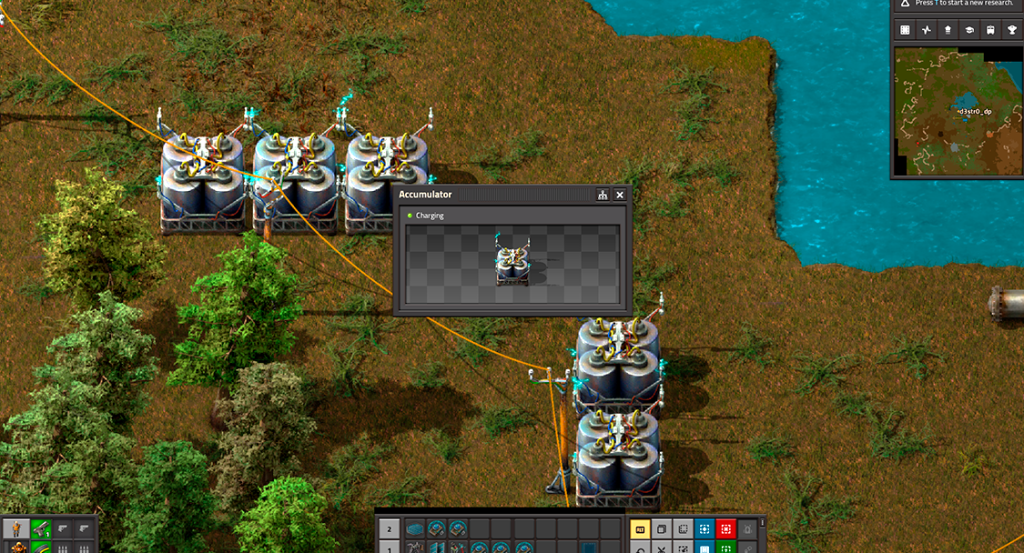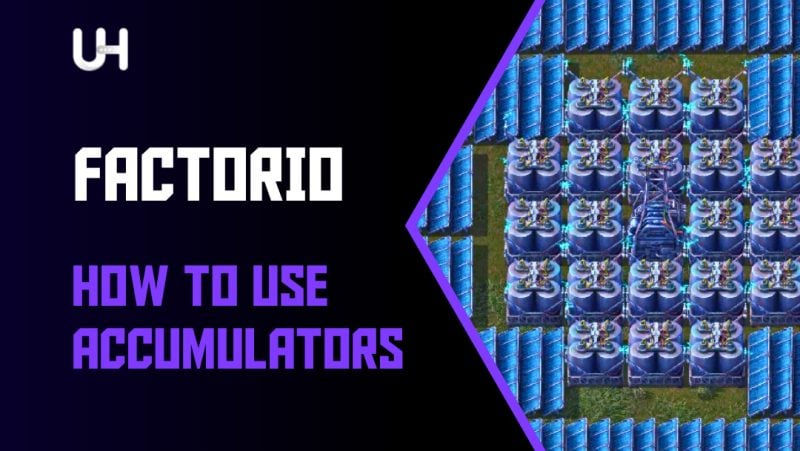Factorio, the popular construction and management simulation game, revolves around building and Building big and complicated factories on an unfamiliar, dangerous planet. One critical aspect of managing your factory involves creating an effective electric power system capable of handling fluctuating energy demands. Among the many components required for a robust power infrastructure, accumulators serve as crucial elements for optimal power management and emergency backup power during high demand situations or power source failures.
This comprehensive guide covers everything you need to know about using accumulators efficiently in Factorio to enhance your power system performance and ensure flowing operations in your ever growing factories. Before starting, however, ensure your Factorio dedicated game server is running and ready for action.
If you enjoy playing survival games, then you should know about Ark Survival Evolved. This highly popular multiplayer survival game can also be deployed on a gaming VPS server.
Crafting Accumulators

Before integrating accumulators into your power setup, familiarize yourself with the fabrication process. Creating accumulators requires gathering the appropriate resources. Additionally, learn the top 5 important tips for Factorio to make yourself more successful.
So Appropriate resources are:
- 10 Iron Plates
- 5 Batteries
- 2 Steel Plates
Employ an assembling machine to blend these raw materials and generate functional accumulators for your electric power framework. Ensure adequate material availability prior to initiating mass production.
Understanding Batteries
Batteries are integral constituents of accumulators. They function as temporary energy reservoirs, facilitating the conversion and flow of electrical current. Within Factorio, accumulators utilize batteries to absorb excess electric energy and distribute it throughout the network during peak demand moments. Stockpiling and distributing battery supplies plays a significant role in enhancing overall efficiency and productivity.
Linking Accumulators to the Electrical Grid
After producing accumulators, the subsequent stage entails connecting them to your existing electric grid. Position the accumulators within reach of electric poles, thereby guaranteeing connection to the network and enabling contribution to the power supply.

Ideal placements include surrounding power intensive facilities or incorporating them into extensive energy storage networks. Strategic integration ensures balanced power circulation and judicious usage of reserved energy.
Upgrade Your Factorio Gaming Today
Ultahost offers high performance servers for Factorio, ensuring smooth gameplay and low latency. With Ultahost, you can experience the brutal world of Factorio with unrivaled server stability and support. Choose Ultahost for your Factorio server hosting and dominate the exiled lands!
Energy Storage Capacity
Each accumulator boasts a storage limit equivalent to 5 Mega joules (MJ) of electric power. Furthermore, surplus energy produced beyond the instantaneous consumption rates gets assimilated into the accumulator bank.
Subsequently, stored energy serves as a contingency reserve, safe guarding against sudden spikes in demand or insufficient primary power outputs. Such buffer stocks prove indispensable for preserving consistent functionality amidst varying energy necessities.

Automatic Charging and Discharging Process
Accumulators autonomously regulate their charging and discharging cycles depending on the prevailing energy balance in your factory. Whenever electricity production supersedes consumption, accumulators start absorbing extra power.
Conversely, when consumption transcends production, stored energy released gradually into the grid. Real-time assessment and adjustments enable steady electric flows and prevent abrupt interruptions.
Rate Limitations on Charging and Discharging
Every accumulator features a maximum charge and discharge speed rated at 300 kilo watts (kW), moreover, recognizing these limitations enables suitable planning of power configurations and averting burdensome strain on individual components. Also, you can choose optimal design which leads to improved efficiency and longer service life expectancy.
Also, you can use an NVMe server, which boosts input and output speeds and improves communication between accumulator charge levels and main processing units, resulting in increased efficiency and extended longevity of power management components.
Circuit Network Monitoring
Integrating accumulators with circuit networks permits tracking their charge levels via distinct signal outputs on the circuit condition interface. Accessible data ranges from 0 to 100 integer values representing respective charge states, additionally, you can apply this knowledge which empowers users to activate auxiliary power mechanisms or govern power allocations according to actual energy prerequisites.
Implementing intelligent monitoring strategies contributes significantly towards proficient energy administration and adaptability in diverse scenarios.
Conclusion
Being good at setting up and using accumulators smartly increases your ability to handle tough challenges in Factorio’s complicated power system. Also, adhering to the defined best practices and concepts guarantees increased in productivity, reduced waste, and steady reliability within escalating industrial empires. Arm yourself with this understanding and elevate your manufacturing prowess today!
If you’re enjoying the Factorio accumulators guide, elevate your experience with Gaming VPS Hosting. Enhance your game play with dedicated resources and customizable settings for smoother, lag free sessions. Dominate the clash with great performance!
FAQ
What are Accumulators in Factorio?
Accumulators are energy storage devices that support power management during high demand or failing power source situations.
How do you craft Accumulators?
Craft Accumulators using an Assembling Machine with 10 Iron Plates, 5 Batteries, and 2 Steel Plates.
How do you link Accumulators to the power grid?
Connect Accumulators to the power grid by placing them within range of electric poles.
What is the purpose of Circuit Network Monitoring?
Circuit Network Monitoring tracks Accumulator charge levels, offering valuable insights for decision making in power management.
What is the maximum charge and discharge rate of Accumulators?
The maximum charge and discharge rate of Accumulators is 300 kW.








